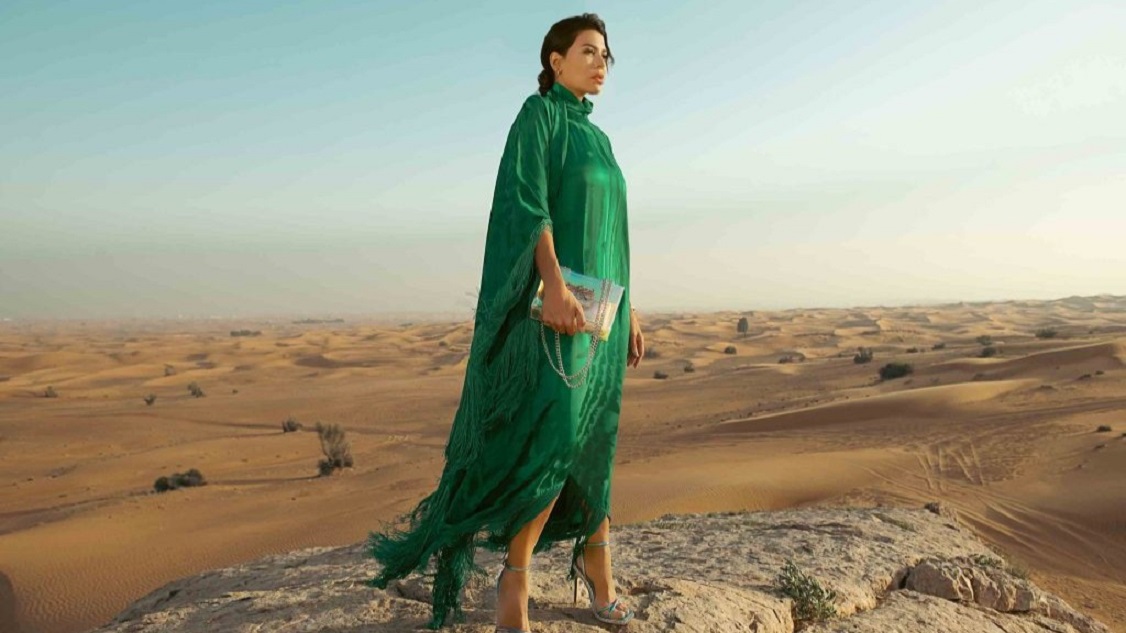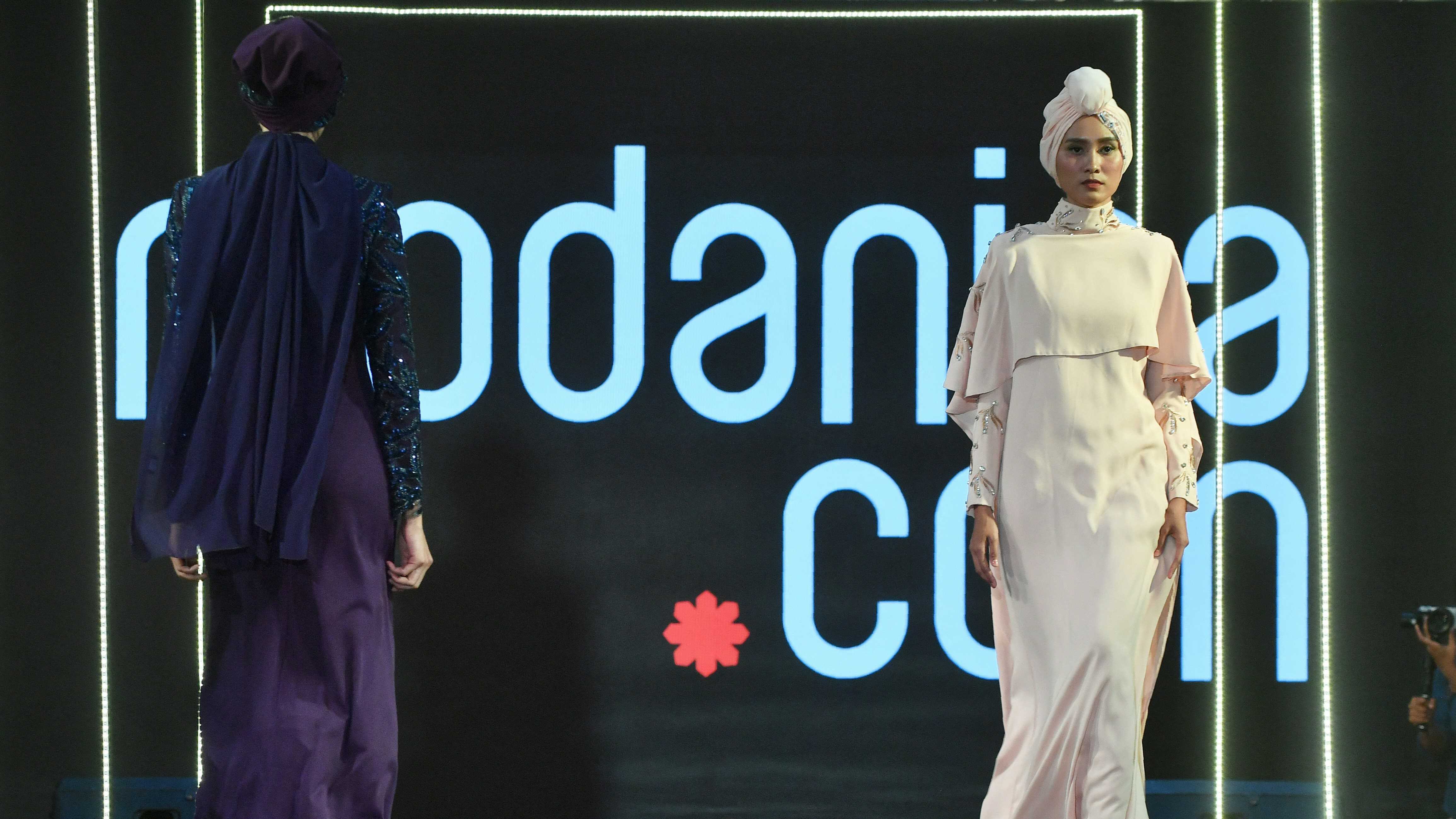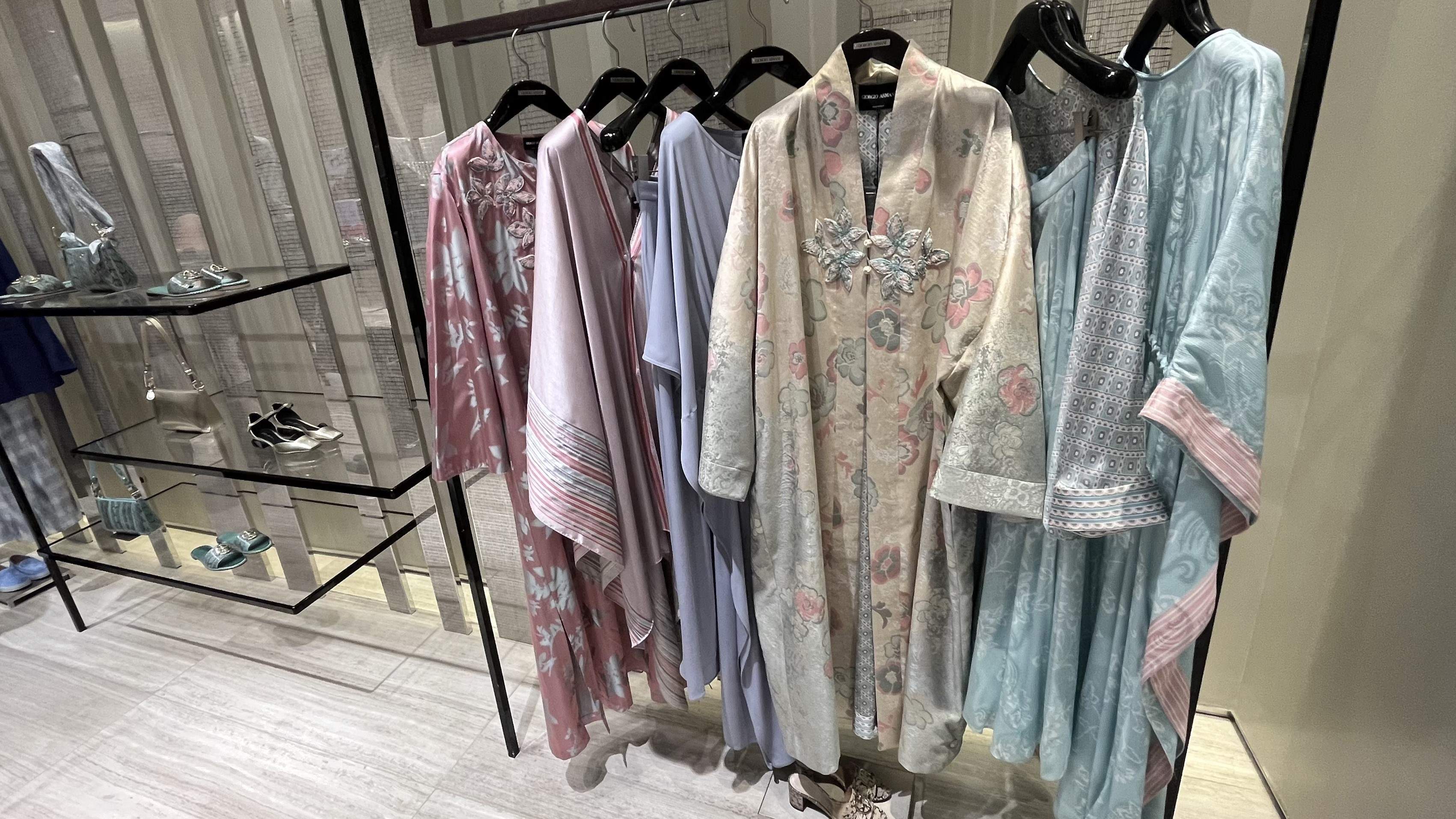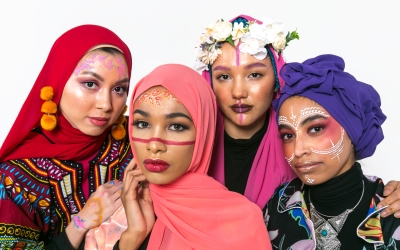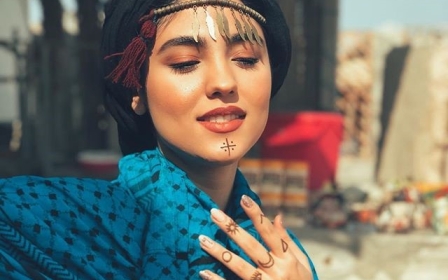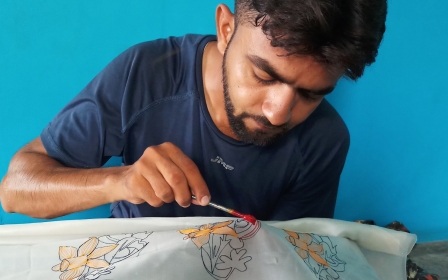Muslim couture: How big labels miss the mark when it comes to modest fashion

A female model wearing a pink-toned tunic showcases the products, which include glittery stiletto heels and a sparkly silver clutch bag, set against a backdrop of rippling sands and soundtracked by an exotic beat.
The slogan for the capsule collection by American label Steve Madden reads: “Reflect on your heritage this Ramadan."
With the advert, the brand adds to a throng of fashion collections recently announced by major labels that are targetting style-conscious Muslims during Ramadan.
Fashion houses like Gucci, Stella McCartney, and H&M are all creating bespoke ranges to meet demand during the “Ramadan rush”, a phrase used in the UK media to describe the surge in spending ahead of and during the holy month.
The companies are hoping to tap into the multi-billion dollar market for modest fashion that has gone global in the past decade.
New MEE newsletter: Jerusalem Dispatch
Sign up to get the latest insights and analysis on Israel-Palestine, alongside Turkey Unpacked and other MEE newsletters
Spending in this sector increased by 5.7 percent in 2021 to $295bn, and it is estimated that it will hit $375bn by 2025, according to the 2022 state of the Global Islamic Economy Report.
The money to be made in the modest fashion market has seen western brands zero in on the so-called Generation M, an empowered group of millennial Muslims “who believe that their identity encompasses both faith and modernity”, says Shelina Janmohamed, who coined the term in her book of the same name.
This is a relatively new phenomenon, says Reina Lewis, professor of cultural studies at London College of Fashion, and a leading expert on modest dress.
“If you put Muslims and fashion in the same sentence [in the past], people thought it was a contradiction,” she says.
“People didn’t see religion and fashion as something that went in the same frame. But the fashion industry has gone from regarding Muslims with an aversion to seeing Muslim consumers as an asset.”
Making ‘modest’ fashionable
When I first began researching modest fashion in 2018, labels were scrambling to cater to this mainly Muslim market, and there were significant tensions between spiritual values and sartorial decisions.
Shoppers criticised so-called modest offerings by big brands for various reasons, including their overtly “eastern” aesthetic or that they were not “modest” enough.
Pieces were criticised for being too thin or having slits that ran up to the thigh, or because they were too conservative and did not meet the needs of young Muslim women who wanted to wear clothes that reflected modern trends but with more cover.
Sadly, some Ramadan collections in 2023 still seem to be making these mistakes.
Steve Madden is far from the only brand to adopt the cookie-cutter trope of an Arabian desert shoot, relying either on orientalist stereotypes or designing clothes with a decidedly ethnic vibe, such as kaftans, abayas, and jilbabs.
“Why are you designing abayas? We know how to do that,” says Romana Mirza, a modest fashion scholar and researcher who has conducted studies with the Islamic Fashion and Design Council.
The solution, she argues, is simple: “Why don’t you design what you’re designing for everybody else and just make it more modest?
"That long dress you put on the runway that everybody loves? Take the slit that starts at the mid-thigh and sew it up for me. That’s all we want.”
Beyond Abayas
The abundance of abayas can be attributed to the fact that many Ramadan collections cater to wealthy Middle Eastern shoppers who visit the UK ahead of the holy month in search of outfits for iftar and suhoor gatherings.
For some communities in the region, “part and parcel of Ramadan are lavish buffets and all-night soirees,” says American fashion journalist Hafsa Lodi, in her book Modesty: A Fashion Paradox.
Culturally, such occasions demand that you wear the latest luxury gowns and bejewelled accessories.
Whereas, I live in London and the only gown I wear for suhoor is a nightgown as I stumble out of bed in the early hours of the morning for a quick meal.
Clearly, these looks aren’t designed for shoppers like me and this is part of the problem – by only catering to wealthy customers from the Middle East designers are excluding a significant chunk of the modest fashion demographic.
Lodi explains: “While western brands’ Ramadan-specific or limited-time-only collections may be aimed at Middle East shoppers and their stereotypically excessive spending habits, many modest fashion shoppers lack the budget to shop for designer brands and seek wearable, versatile, and affordable garments all year round.”
Business owners Ruby Aslam and Shehr Kazmi could relate to the phenomenon when they attended the first-ever London Modest Fashion Week in 2017.
They were deflated at the show’s offerings, which consisted primarily of formal wear and traditional looks – lacey abayas and crushed velvet palazzos.
“We thought we’d find something a bit more urban, a bit more casual because that’s how we dress and a lot of people we know dress that way,” says Aslam.
Frustrated with the lack of options available to them, they created their own brand - Till We Cover - and designed clothes that reflect what they and other women like them wanted to wear: contemporary and covered.
But why have other brands been struggling to design items that are both modest and modern?
“I think what’s throwing them off is religiosity,” suggests Mirza. “Everybody is spiritual today, but it’s very weird to be religious.”
In western societies religion has turned into a cultural practice, Mirza argues, with commercially-driven holidays such as Christmas and Easter.
“Being religious is so foreign, they don’t understand how to approach it or serve its needs. But they don’t have to do those things. Just do for us what you do for everybody else.”
A niche field?
But there are some signs that the big brands are finally beginning to listen.
The ubiquity of modest fashion in mainstream culture means brands can seek inspiration from the hordes of trendy Muslim fashion content creators on social media and use global modest fashion weeks to inform their decisions.
A glance at the modest edits on ASOS, Net-a-Porter, and Next show styles that are more varied.
While long-and-flowy options still abound, they are not the only choice on offer. Now tunics and kaftans sit alongside oversized hoodies, baggy cargo trousers, longline denim jackets, and maxi dresses.
That said, there are still gaps that have yet to be considered such as plus size and tall options.
It has taken a while for this simple message – offer more variety – to land, partly because modesty is difficult to define and is often interpreted in many ways.
Each modest dresser has their own nuanced set of modesty “guidelines” that are shaped not only by religious beliefs but also cultural and generational factors, as well as personal taste.
Another reason is that Muslim women’s dress has been embroiled in controversy in the west. The veil in particular has become a highly-politicised and racially divisive garment.
So, what does the future look like for modest fashion?
“A diversification of styles and aesthetics”, predicts Lewis.
Savvy young Muslim creatives are changing the narrative on what dressing modestly means.
They have a unique insight into - and share - their generation’s desire to intertwine their cultures and heritage into a distinct visual style.
This “fusion fashion”, as Lewis calls it, demonstrates the different needs of the growing modest market.
The hashtag #modestfashion currently has 3.5bn views on TikTok, with influencers such as Canada-based Maha Gondal layering pieces into chic outfits, such as miniskirts over baggy trousers.
Meanwhile, rising British designers Saeedah Haque and Kazna Asker are reinventing the traditional abaya with trendy streetwear twists, reimagining it into a tracksuit or utilitarian-style ankle-grazing hoodie.
These innovative Muslim creatives are showing the fashion industry that modesty is as multifaceted and modern as they are.
Their message is often not just about style, but also representation.
As Sheffield-based designer Asker said of her tracksuit abayas in a recent interview: “When people think about modest fashion, they focus on what they see on the news.
"I want people to know that we’re cool and the negative stereotypes [of Muslims] don’t reflect us."
Middle East Eye delivers independent and unrivalled coverage and analysis of the Middle East, North Africa and beyond. To learn more about republishing this content and the associated fees, please fill out this form. More about MEE can be found here.


